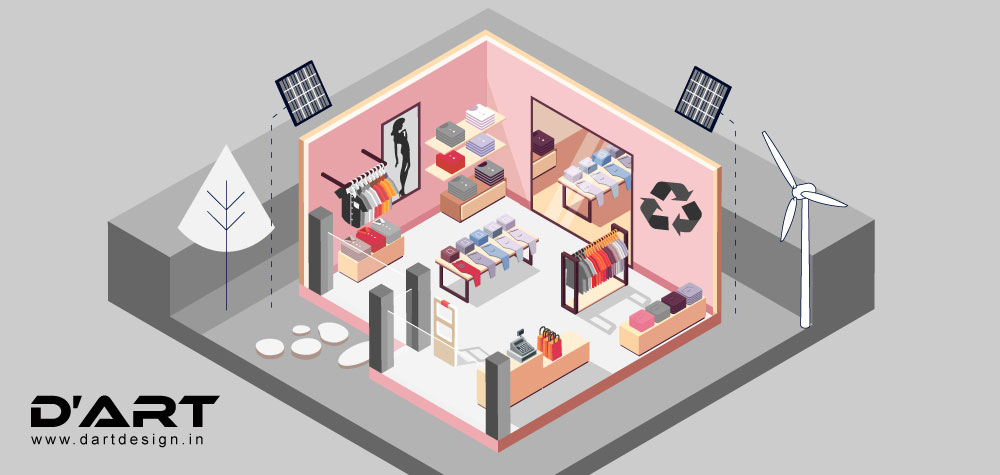Humans are chaotic beings and are continuously up to something.
They don’t notice when the summer vanishes or when the winter waltzes in. Maybe that’s the reason why no one notices the changes occurring in our ecosystem.
Nothing can remain the same; the sky isn’t always blue. It keeps changing, just like us humans.
And the biggest reason for this change is the rapid development in the technological sector. The closer we get to technology, the further we move from our own kind and nature.
Global warming is at its peak. The continuously rising heat in the Western countries clearly indicates how much damage we have incurred on the ecosystem. These countries were supposed to be the cold areas of the planet, but with human intervention, the opposite is happening, and there will be more to come if the right steps aren’t taken at the right time.
That’s why it’s time to think about the natural realm and do something about it.
Keeping these facts and things in mind, visionary brands have already set forth their plans. The most common yet effective way they are adopting is creating a sustainable space design.
However, there are certain principles that these brick-and-mortar stores consider during this process.
Waste reduction
Earth has only limited resources, so their mindful usage becomes vital. That’s why interior designers utilize the power they have to use eco-friendly materials.
They even employ vintage artifacts and designs as they help in waste reduction. So, it’s always better to reuse instead of creating something new.
For example, MONC, a British eyewear brand, collaborated with Nina+Co for the creation of its first physical store in London. The design studio decided to adopt an innovative approach and used compostable bio-materials for all the main design elements. Like, shelves were made of cornflour foam, which can dissolve in water when their lifespan ends.
These are the kinds of approaches that can be used to design and decorate the interior of a store without wasting resources.
Plus, when a brand uses this method, they can even renovate and be up-to-date with the trends without having the feeling of guilt.
Energy efficiency Design
Buildings, stores, and malls are significant contributors to greenhouse emissions. The elements like heating, AC, and lighting produce a lot of carbon dioxide in the atmosphere.
However, if designed strategically, all this energy can be saved. Small alterations like installing curtains and drapes in heat can reduce the need for AC.
Interior designers even choose high-quality windows for the building’s heat escape. They even choose the color pallets mindfully as light colors reflect light as compared to dark colors that need more installations and usage of lights.
Some even take more advanced steps and use the most energy-efficient technology they can get their hands on.
For example, KFC launched its first Green Pioneer Store in Hangzhou. The store uses renewable energy and solar panels, which produce 10,000kWh of solar power. For better energy efficiency, the shop also incorporates the Internet of Things (IoT) management system.
Durability and flexibility
People get bored easily. They need engaging and new things. For this purpose, brands keep on renovating their stores.
However, these alterations and additions consume cost, time, and natural resources. During this process, a lot of materials are discarded.
That’s why the durability and flexibility of materials become essential. Designers aim to create timeless, sustainable store designs that can be easily upgraded.
Minimizing the environmental impact
While creating the design of any physical store, materials with the lowest environmental impact should be used because responsible treatment of natural resources is the only way to build a sustainable planet.
For example, a Brazilian design studio, Furf, created a compostable urn, namely Sail. It can decompose with water within days and is transformed into a natural fertilizer.
These kinds of things can easily be used as showpieces or artifacts in the stores and, later on, be used for other purposes.
Focusing on healthy ecosystem design
A healthy ecosystem design is not only good for the environment but also for the people visiting that place.
Sustainable options when it comes to other elements like lighting, furniture, and air quality should also be considered. Furniture that doesn’t produce harmful toxins or any other resources that produce low emissions should be employed.
For example, Early BKK, a two-story coffee shop in Bangkok, upcycled the waste they found in neighborhood trash, like glass bottles, and created a beautiful facade by incorporating it with the metal ring structure.
This helps the shop to get natural light throughout the day while creating patterns of its own as the sunlight streams in from different angles.
The store has also installed solar panels on the roof and uses them as their main energy source.
Conclusion
Sustainability or environmentalism is not just a concept to attract people. Instead, it’s also our duty as human beings to be mindful of our resources and how we use them. We are the tenants on this planet, and if we don’t want our future generations to suffer, we must take initiative now. And for the people to step into that threshold, brands have to buckle up and lead the way, as people need someone or something to look up to. Adopting this approach, brands will not only encourage others to do so, but it’ll also spread awareness about this issue. Hence leading the people to see these brands as one of them instead of some cold corporate building. This will build trust and goodwill of the company among the people. Plus, it’ll help to make this world a better place.

